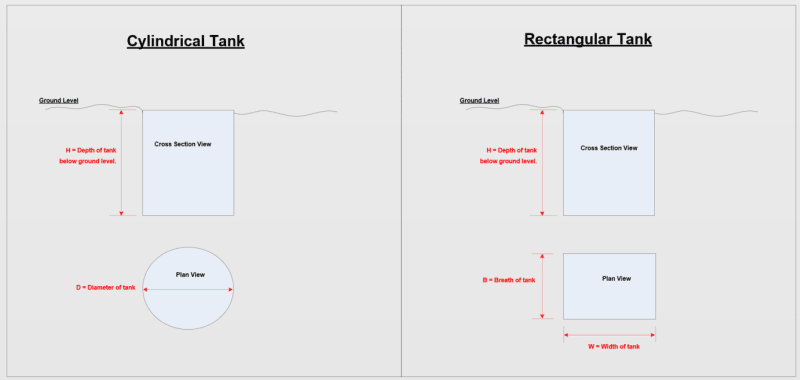MatthewMansfield
Civil/Environmental
Hello all
I was hoping someone could help point me in the right direction regarding the following problem.
I have 2 x tanks, 1 x cylindrical and the other rectangular of a given depth H that will be installed below ground with just the top of the tank exposed as shown below:-

These tanks will contain sewage and I am trying to figure out how to calculate the maximum pressure exerted on the wall of the tanks due to the surrounding soil and what thickness should the walls be in order to withstand the maximum pressures.
The tank will be installed in a location where the ground conditions are virtually dry (so I don't need to consider water pressure) and the soil is composed of hard gravel / sand.
Any help will be greatly appreciated.
Thank you.
I was hoping someone could help point me in the right direction regarding the following problem.
I have 2 x tanks, 1 x cylindrical and the other rectangular of a given depth H that will be installed below ground with just the top of the tank exposed as shown below:-

These tanks will contain sewage and I am trying to figure out how to calculate the maximum pressure exerted on the wall of the tanks due to the surrounding soil and what thickness should the walls be in order to withstand the maximum pressures.
The tank will be installed in a location where the ground conditions are virtually dry (so I don't need to consider water pressure) and the soil is composed of hard gravel / sand.
Any help will be greatly appreciated.
Thank you.
